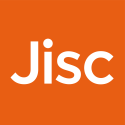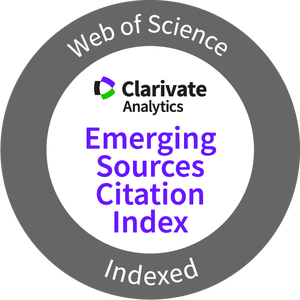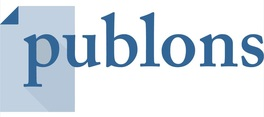Development of a task-oriented physical education model to enhance students’ intrinsic motivation and motor skills
Resumen
Physical education serves as a medium to foster the development of motor skills, physical fitness, cognitive abilities, and value appreciation—including attitudes, emotional, spiritual, and social dimensions. This study aimed to examine whether task involvement influences students' intrinsic motivation and motor learning outcomes in physical education. The participants in this research included educational psychology experts, physical education specialists, junior high school physical education teachers in Surabaya, and junior high school students enrolled in Physical Education, Sports, and Health classes. The study involved two classes comprising a total of 70 students. Data were collected through a needs assessment using Focus Group Discussions (FGDs) with experts to explore the importance of innovation in physical education for enhancing intrinsic motivation and motor skill development. The instruments used included an intrinsic motivation questionnaire adapted from the Sport Motivation Scale and a motor ability test administered using the Barrow Motor Ability Test (BMAT), which includes six items. The results yielded a significance value of p = 0.000, indicating a statistically significant difference between pre- and post-test intrinsic motivation scores. In conclusion, the task-oriented physical education learning model was effective in increasing students' intrinsic motivation, making them more satisfied, engaged, and joyful when participating in physical activities at school.
Descargas
-
Resumen365
-
PDF 315
Citas
Ahmed, K. R., Uddin, R., Kolbe-Alexander, T. L., & Khan, A. (2021). The effectiveness of physical activity interventions in Asian children and adolescents: a systematic review. Public Health, 194, 48–59. https://doi.org/10.1016/j.puhe.2021.02.011
Alea, L. A., Fabrea, M. F., Roldan, R. D. A., & Farooqi, A. Z. (2020). Teachers’ Covid-19 awareness, distance learning education experiences and perceptions towards institutional readiness and challenges. International Journal of Learning, Teaching and Educational Research, 19(6), 127–144. https://doi.org/10.26803/ijlter.19.6.8
Aliriad, H., Adi, S., Manullang, J. G., Endrawan, I. B., & Satria, M. H. (2024). Improvement of Motor Skills and Motivation to Learn Physical Education Through the Use of Traditional Games. Physical Education Theory and Methodology, 24(1), 32–40. https://doi.org/10.17309/tmfv.2024.1.04
Ardha, M. A. Al, Yang, C. B., Adhe, K. R., Khory, F. D., Hartoto, S., & Putra, K. P. (2018). Multiple Intelligences and Physical Education Curriculum: Application and Reflection of Every Education Level in Indonesia. Advances in Social Science, Education and Humanities Research, 212, 587–592. https://doi.org/10.2991/icei-18.2018.129
Chen, A., & Ennis, C. D. (2004). Goals, Interests, and Learning in Physical Education. The Journal of Educational Research, 97(6), 329–339. https://doi.org/10.3200/JOER.97.6.329-339
Deng, J., Liu, Y., Chen, R., & Wang, Y. (2023). The Relationship between Physical Activity and Life Satisfaction among University Students in China: The Mediating Role of Self-Efficacy and Resilience. Behavioral Sciences, 13(11), 1-13. https://doi.org/10.3390/bs13110889
Hayati, H. S., Ch, M., & Asmawi, M. (2017). Effect of Traditional Games, Learning Motivation and Learning Style on Childhoods Gross Motor Skills. International Journal of Education and Research, 5(7), 53–66.
Indahwati, N., & Maksum, A. (2023). The Relationship between Socioeconomic Factors, Physical Literacy, Physical Health, and Well-being among Female Athletes: A Construct Theoretical Model. Annals of Applied Sport Science, 11(4), 1-12. https://doi.org/10.61186/aassjournal.1196
Jagacinski, C. M., Kumar, S., & Kokkinou, I. (2008). Challenge seeking: The relationship of achievement goals to choice of task difficulty level in ego-involving and neutral conditions. Motivation and Emotion, 32(4), 310–322. https://doi.org/10.1007/s11031-008-9103-3
Lutsenko, I., Horpynych, O., Hloba, T., Nesterenko, O., & Chykolba, H. (2024). Features of organizing physical education for students in the conditions of distance learning. SPORT TK-EuroAmerican Journal of Sport Sciences, 13, 1–15. https://doi.org/10.6018/sportk.55738 1
Mashkoor, N. B., & Hameed, N. H. (2022). Effect of physical-kinesthetic intelligence exercises on developing motor abilities and basic skills of basketball in female students. SPORT TK-EuroAmerican Journal of Sport Sciences, 11, 1–10. https://doi.org/10.6018/sportk.514981
Ntoumanis, N., & Biddle, S. J. H. (1999). A review of motivational climate in physical activity. Journal of Sports Sciences, 17(8), 643–665. https://doi.org/10.1080/026404199365678
Rogers, P. (2022). The Shape of the Nation. In Defoe’s Tour and Early Modern Britain: Panorama of the Nation. Cambridge: Cambridge University Press.
Rubio-Castillo, A. D., & Gómez-Mármol, A. (2016). Effects of Ludotechnical Model in technical learning, competence and motivation when teaching basketball in Physical Education. SPORT TK-EuroAmerican Journal of Sport Sciences, 5(2), 41–46. https://doi.org/10.6018/264631
Wu, X., Gai, X., Yu, T., Yu, H., & Zhang, Y. (2021). Perceived Motivational Climate and Stages of Exercise Behavior Change: Mediating Roles of Motivation Within and Beyond Physical Education Class. Frontiers in Psychology, 12, 1–13. https://doi.org/10.3389/fpsyg.2021.737461
Yakubjonov, I. A. (2021). Modern Requirements for Teaching Discipline “Sports” In Higher Education. The American Journal of Interdisciplinary Innovations and Research, 3(2), 21–23. https://doi.org/10.37547/tajiir/Volume03Issue02-04
Las obras que se publican en esta revista están sujetas a los siguientes términos:
1. El Servicio de Publicaciones de la Universidad de Murcia (la editorial) conserva los derechos patrimoniales (copyright) de las obras publicadas, y favorece y permite la reutilización de las mismas bajo la licencia de uso indicada en el punto 2.
© Servicio de Publicaciones, Universidad de Murcia, 2013
2. Las obras se publican en la edición electrónica de la revista bajo una licencia Creative Commons Reconocimiento-NoComercial-SinObraDerivada 3.0 España (texto legal). Se pueden copiar, usar, difundir, transmitir y exponer públicamente, siempre que: i) se cite la autoría y la fuente original de su publicación (revista, editorial y URL de la obra); ii) no se usen para fines comerciales; iii) se mencione la existencia y especificaciones de esta licencia de uso.
3. Condiciones de auto-archivo. Se permite y se anima a los autores a difundir electrónicamente las versiones pre-print (versión antes de ser evaluada) y/o post-print (versión evaluada y aceptada para su publicación) de sus obras antes de su publicación, ya que favorece su circulación y difusión más temprana y con ello un posible aumento en su citación y alcance entre la comunidad académica.



















